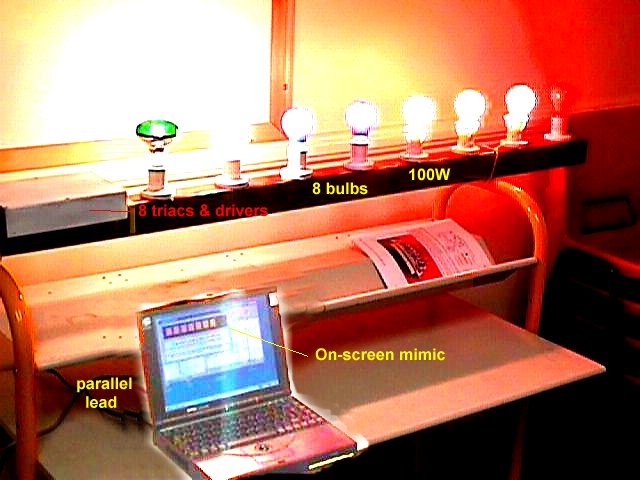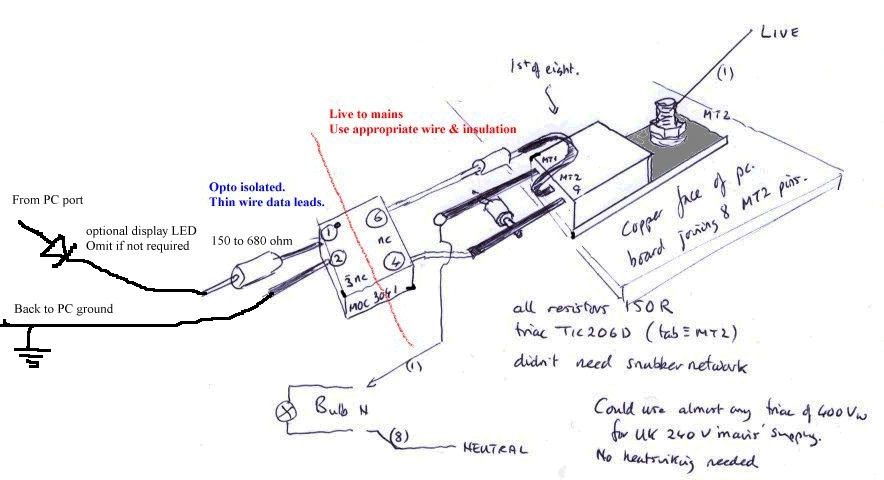An 8-light DiscoLitez rig controlled by Liberty Basic
This is about a bar of mains lamps controlled from your computer's parallel printer port. It gave me a chance to get my computer interacting with the real world & humans in an impressive way. (I was a teacher when playing with this...) Possibly even useful.. & I do come from the home of Bridgwater & Taunton carnivals!


The photos give an idea of my particular construction scheme- bar has 8 x 100W bulbs, is about 1.5m long ( 4 feet), and has the interface drive box at the end. Cables are to printer port & to mains. Eight identical zero-crossing opto-isolators drive triacs with no mains interference. The bulbs tend to be the most expensive bit if you get carried away- each channel could drive 1kW of bulbs.



The basic circuit is available from the DiscoLitez home site.
It is designed to run as an add-on to WinAmp which plays your *.wav & *.mp3 files, etc. WinAmp runs the lights as on-screen small 'mimic' lights instead of or as well as the external lamps.
BEWARE MANY COMPONENTS ARE AT MAINS POTENTIAL!
Use proper insulation/earthing practice. Track spacing on strip board is NOT designed to insulate mains voltage- hence my 'mid-air jungle' layout. Use earthed boxes or double-insulation, and use rubber grommets and sound cable termination.
I did not find I needed the 'snubber' or RC network across the circuit...

The program file can be snipped and run in Liberty Basic. If you do not have this (shame on you!) there is a zipped self-contained file of 833k here to download, unzip to a directory & run the *.exe file.
The drivers are addressed directly off the printer (parallel) port for those running Win 95 r earlier- you need direct port addressing, so it won't work with NT.
For Liberty Basic users it gives a dramatic way of setting up say Christmas or disco/party lights. Since you are not using Winamp or the DiscoLitez plug-in you can write LB programs to sequence & time the lights, etc. For NT onwards you'll have to use the usual sneaky dll ways to directly address the port. If you send appropriate patterns and wave the bar through the air you can 'write in mid-air'- think of it as an ink-jet printer sending flashes of colour!!
It is sensible to experiment at first with cheap LEDs & resistors on the printer port. Again, details on the DiscoLitez site.

Hope you are encouraged to experiment!
Please contact me with queries or adaptations at John Fisher






